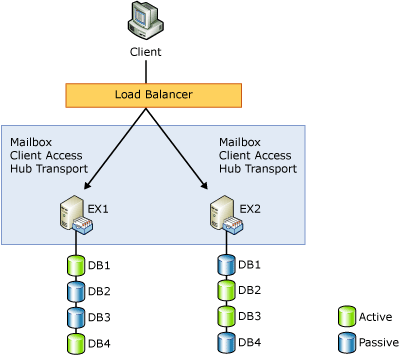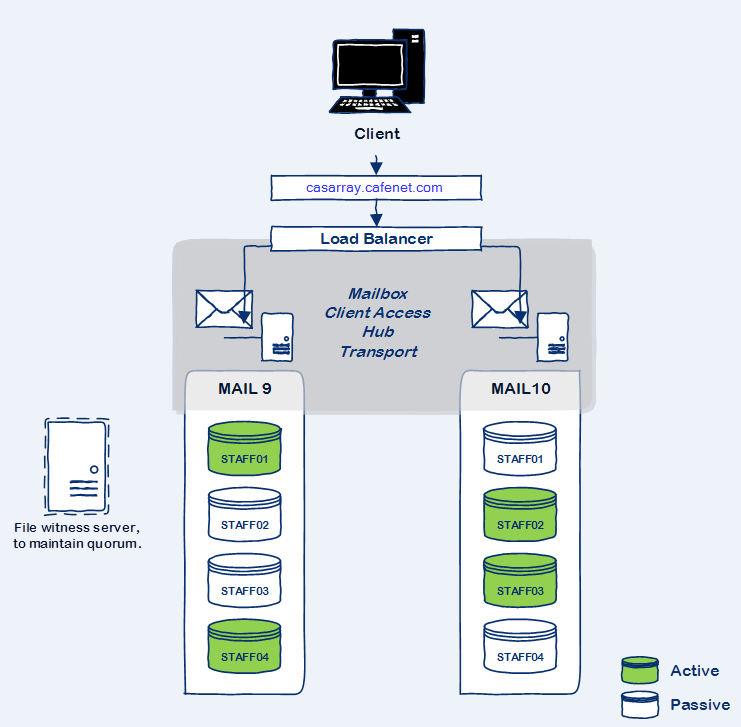Exchange 2010 - Two-member DAG questions
I've been going over DAG setup for an Exchange 2010 and am a bit confused about how it works.
Looking at the "Database Availability Group Design Examples" at https://technet.microsoft.com/en-us/library/dd979781(v=exchg.141).aspx, I find the following two-member DAG to seem easiest and most applicable to my environment.
The diagram is shown as follows:

This raises a couple questions:
1. If databases are "Passive", what does that mean?
2. Since a network load balancer is used, what if somebody whos mailbox is on an "Active" database is directed by the Load Balancer to the other mailbox server where their database is "Passive".
3. What's the availability look like if both DAG members are running Client Access/Mailbox/HUB roles? Would it be wise to add a third member to the DAG and then give it only the Client Access or only Mailbox role and add a delayed replication, whereas the other 2 would be immediate replication?
Looking at the "Database Availability Group Design Examples" at https://technet.microsoft.com/en-us/library/dd979781(v=exchg.141).aspx, I find the following two-member DAG to seem easiest and most applicable to my environment.
The diagram is shown as follows:

This raises a couple questions:
1. If databases are "Passive", what does that mean?
2. Since a network load balancer is used, what if somebody whos mailbox is on an "Active" database is directed by the Load Balancer to the other mailbox server where their database is "Passive".
3. What's the availability look like if both DAG members are running Client Access/Mailbox/HUB roles? Would it be wise to add a third member to the DAG and then give it only the Client Access or only Mailbox role and add a delayed replication, whereas the other 2 would be immediate replication?
ASKER CERTIFIED SOLUTION
membership
This solution is only available to members.
To access this solution, you must be a member of Experts Exchange.
SOLUTION
membership
This solution is only available to members.
To access this solution, you must be a member of Experts Exchange.
SOLUTION
membership
This solution is only available to members.
To access this solution, you must be a member of Experts Exchange.
SOLUTION
membership
This solution is only available to members.
To access this solution, you must be a member of Experts Exchange.
ASKER
So the active databases depicted are split between servers just to alleviate the load on a the servers they are active in?
No, it is not like that, Active DB exist on only one server and passive gets updated to become active.
ASKER
That's correct.

ASKER
I guess the diagram was confusing me
If active database "DB1" is on server "EX1", and "EX1" gets powered off, then the passive "DB1" on "EX2" will become active?